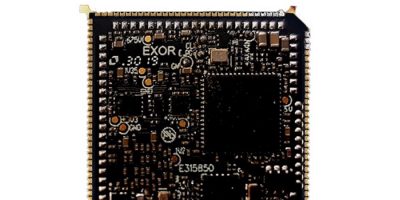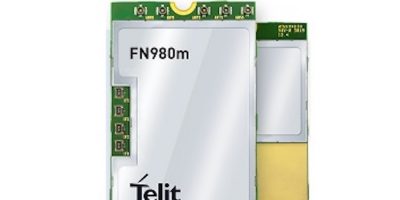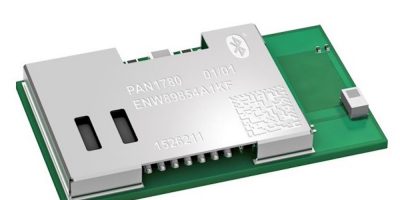A system on module (SoM) for IoT edge deployment in smart applications has been developed by Exor Embedded and Arrow Electronics. The Exor nanoSOM nS02 features STMicroelectronics’ 800MHz STM32MP1 micrprocessor.
The nanoSOM nS02 is described as a high-performance, energy-efficient system, based on the 800MHz version of STMicroelectronics’ STM32MP1 microprocessor. The module serves as a full production design and Arrow is also offering a supporting development kit.
The STM32MP1 has dual Arm Cortex -A7 cores and a Cortex-M4 core as well as a 3D graphics processing unit (GPU) that supports advanced human machine interface (HMI) development.
The nS02 is suitable for applications requiring IoT connectivity, multimedia capabilities and high security in connectivity, for example, industry 4.0 embedded systems.
The nS02 is rugged and soldered directly onto the main carrier board, without the need for separate connectors that could reduce the reliability of the system, says Arrow.
It is compact, with dimension of 25.4 x 25.4 x 3.0mm, and is claimed to provide flexibility for developers of smart IoT products, which can be designed as extremely compact and ultra-slim products, Arrow continues. Target applications include smart IoT controllers and gateways, cloud edge interfaces, and building automation.
The nanoSOM nS02 includes a production-ready Linux RT board support package (BSP) and fully supports the Exor XPlatform, which includes Exor Embedded Open HMI software, Corvina Cloud IIoT platform and IEC61131 CODESYS or Exor xPLC runtime.
An optional OpenHMI software platform supports the design of high quality, user-friendly SVG and HTML5 graphical user interfaces (GUIs), and connectivity with over 200 communication protocols. MQTT and OPC-UA interfaces are also available together with cloud connectivity for telemetry and remote assistance using OpenVPN software.
Several configurations are available, offering choices of memory capacity and a security option including 256Mbyte or 512Mbyte DDR RAM with 4Gbyte eMMC flash disk or 1Gbyte DDR RAM with 8Gbyte eMMC flash disk.
Exor’s product longevity program ensures a stable supply of products. nanoSOM nS02 products are available for a minimum of 10 years from time of product launch.



![Farnell supports makers and students with pi-top [4] computer](https://smartcitieselectronics.com/wp-content/uploads/2020/07/Farnell_27-07-2020-400x200-c-default.jpg)



